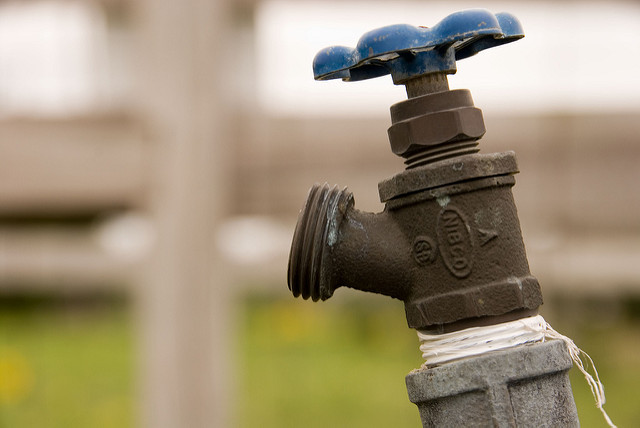Tips for Locating Water Leaks
As a general rule, your water bill is the least costly every month. However, on occasion water leaks do happen causing the bill to rise. I have seen this happen many times over the last four years working for a rural water district.
So you get a high water bill, now what? Hopefully you have been keeping up with your monthly statements. If so, you can check the reading on the current statement with the previous one to be sure that it is accurate to the previous month. Next, check the reading on the meter itself. While you are checking the reading, notice the numbers or dial on the meter to be sure they are not continuously moving, if they are and nothing in the house is on, you have a leak.
If you think your water department might have made a mistake, give them a call. In the event that you confirm you do have a leak somewhere, follow these tips to help locate the source of the problem. By finding where the leak is, you will be able to determine if you can fix it yourself. If you are not able to fix it yourself, you will be able to save a plumber time and yourself money by being able to show them where it is. I have ten years experience working for a rural water department and below are the tips I give our customers when they call.
Start in the Bathroom
Toilets are the problem more often than not. To see if your toilets are the culprit, first flush the toilet and wait for it to refill. If it hangs up and doesn't quit running, you might need to replace some parts inside. If this doesn't seem to be an issue, try one more thing. Put several drops of red food coloring in the tank, then wait a few minutes and check if the water in the bowl has been tinted red. If so, your toilet has a slow leak.
Moving on, check all the faucets in the bathroom area. A good place to start is underneath. Place a paper towel under the faucet and check it often to see if it is wet. Bathtubs and showers can be a little more difficult because the plumbing is generally hidden behind the surround. If you have reason to suspect this area, you will probably want to contact your plumber as soon as possible.
In the Kitchen
Appliances that require water, such as refrigerators with ice makers and dishwashers should be checked. Be sure all connects are tight and that all lines are free from cracks, especially plastic lines. Next, check under the faucets the same as you would in the bathroom.
Laundry Room
Check all of the connections from the supply line from the house to the back of your washing machine. Be sure to check the hot water tank as well.

Outside
If you can't find anything inside, check the hydrants around the outside of your home. They should always be wrapped with pipe insulation during colder months and covered whenever possible. Or better yet, install a shut off before the hydrant that can be accessed to turn off during colder months. Check to be sure that the water completely shuts off. Also, check for soft spots on the ground surrounding them.
If you have a general idea of where the lines come from the road to your home, you can walk water lines checking for soft spots or puddles. This can be unreliable if the break in the line is small.
When in doubt, call a professional. You don't want to have to pay a plumber to clean up your mess on top of fixing the leak and paying for the high bill. Once the leak has been fixed, contact your water department to ask if they have a water leak policy that might save you some money. In our district, the bill can be adjusted by office personnel one time a year once the leak has been fixed.
Photo credit: John Wiley, https://www.flickr.com/photos/jonwiley/
Hello steemmom!
Congratulations! This post has been randomly Resteemed! For a chance to get more of your content resteemed join the Steem Engine Team